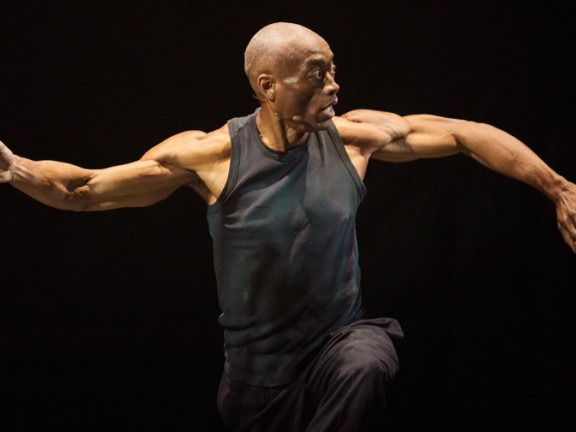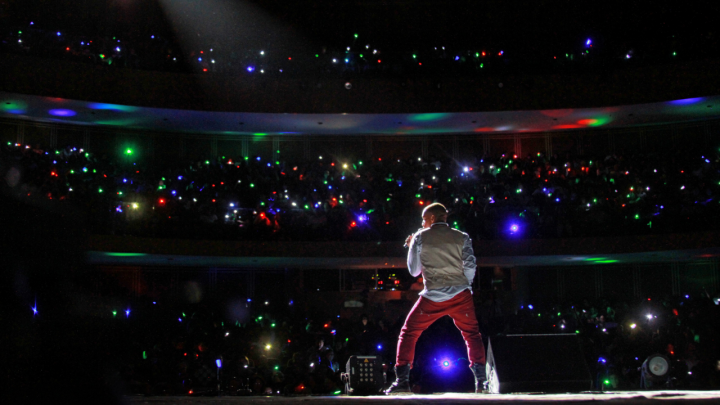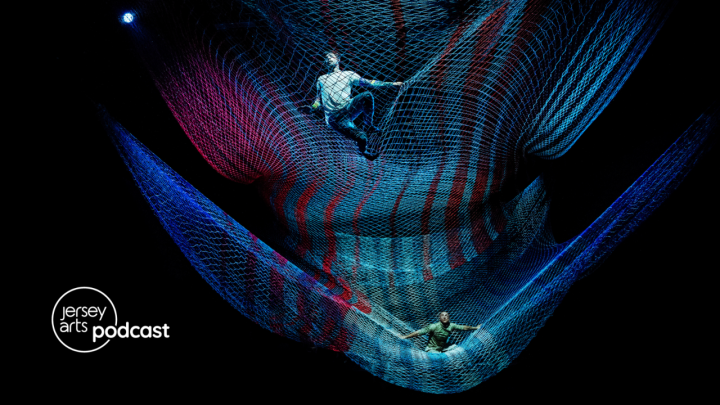Interview: Bill T. Jones

When I learned that I would have the opportunity to have a phone interview with Bill T. Jones, I began to hyperventilate and let out a squeal. (I called my husband to tell him the news, but since he was not sure who Bill T. Jones was, I had to put it in his terms… “it is as if you could chat with Joe Torre.”) I have studied Bill T. Jones in dance history, seen videos of his earlier performances with Arnie Zane, followed his choreographic career, and watched him dance down the aisle to accept a Tony Award and be honored by the Kennedy Center. To say that I am a fan is surely an understatement. Now, I was to have the chance to discuss his upcoming world premiere of his work Story/Time at The Alexander Kasser Theater at Montclair State University.
As I dialed the phone to speak with Mr. Jones, I have to admit I was a bit nervous as my heart was beating with excitement and anticipation, and I was praying that my tongue would not twist. So I began:
Macada Brandl for Jersey Artss: I am thrilled that the world premiere of your work Story/Time will be here in New Jersey. I understand that this piece has developed in residence at several university locations. How specifically did Montclair State University support your work and why was the Alexander Kasser Theater chosen for the premiere?
Mr. Jones explained that he has premiered other major works, including Blind Date and A Quarreling Pair, at the theater, and that he has found wonderful support from Jed Wheeler (the curator-artistic director). “Jed believes in what we do.” Mr. Jones loves working at the theater as it has everything that he could want, including state of the art lighting and sound and great wing space.
JA: Story/Time is inspired by artist and composer John Cage's Indeterminacy. How much of the work is set for each performance and how much is determined by chance?
Story/Time has a set of sequences which are combined and recombined in different sequences by the roll of the dice. There are 35 items on “the menu” which are rearranged in random order to make the performance. Dance combinations, stories, lighting, sound are all put together by chance, separately, to create the performance piece. The movement is inspired by dances performed across Mr. Jones’ career as a dancer/choreographer. Each day in rehearsal the week before the performance, the company will perform a different arrangement of the work and one of these five arrangements will be chosen for the premiere performance on Saturday evening.

According to Mr. Jones, the crafting of the dance by chance can be liberating because “everything is possible,” Mr. Jones explained that it allows his “taste to get out of the way.” As far as how the dancers keep it straight, they keep a score of the performance on stage and as Mr. Jones said, ‘it’s all about the transitions.” The sound score, which is composed and performed by Ted Coffey, includes electronic music, folk, voice, and fragments of songs from all genres, even Mozart.
If you are interested in more information about the process behind the performance, Mr. Jones will be delivering three lectures in the Toni Morrison Lecture series at Princeton University in April to discuss the development of Story/Time.
JA: I am thrilled that you are performing in the piece. Can you tell me a bit about your interest in story telling? Is each of the stories related to you and your life or are there other outside sources as well?
Mr. Jones told me that his parents were great story tellers and explained that story telling is an African-American tradition. He has retired as a dancer, but will be on stage telling at least 60 one-minute stories during the 70-minute performance. “I do pause for a bit so that the dance can come forward.” His stories look at the world from the inside out and cover a variety of topics from diverse sources. Stories have been inspired by events in his life, his family, his friends, and fellow artists. Some are tragic, some are angry, some comic, some scientific. Each story changes after one minute (with a clock on stage to count the seconds.) Some narratives are unfinished at the minute, which may leave some of the audience wondering what happened next. The performance includes approximately 60, but these are chosen randomly from 155 stories that he has written. He aims to complete 180 stories.
JA: You are probably one of … if not THE… most well-known choreographer/company in the United States. What would your advice be to some of the dance companies who have difficulty building an audience? I understand that you do not approve of the “reality dance shows” on television – what are your suggestions to building an audience for dance?
Mr. Jones chuckled at the question when I mentioned his disapproval of reality dance shows. (Read my September 2011 entry to understand why) But, he continued that he too struggles, struggles to get funding and audience. He scrambles to make sure his dancers are paid with health coverage. He explained that dance is not the easiest draw, especially at this time. “This is not a curious public,” Mr. Jones explained. “Movement based investigations need a curious public.”
Mr. Jones believes it is important that dance companies are solidly committed to what they are producing. They need to think to whom they are talking and to consider what meal they are serving. Choreographers need to choreograph and show their works and get feedback from everyone, especially friends and peers. Mr. Jones also warned “And don’t forget showmanship.” , especially with few funds, we must use our imagination to see what we can do within those limitations to get our passion and work seen.
JA: You have had a brilliant career as a dancer, performer, choreographer and dance artist. What one-minute piece of advice would you share with a person beginning in these pursuits?
Mr. Jones offered these pieces of advice:
• Identify what you love about dancing and follow your passion • Define what success would look like for you personally and pursue it relentlessly. Don’t be lazy! • Dream big, but don’t fantasize about being somebody else or about someone else’s success.
Mr. Jones was most generous with his time and allowed me to ask the last two questions, even though it was past the allotted time for the interview. He then invited me to attend a rehearsal at the theater, an invitation which I could not refuse – even though it was my husband’s birthday. I would be able to write a whole other article about that experience. In short, Story/Time is a fascinating work which should not be missed. You can get a taste of the piece on You Tube, but to experience it you really must see it live.
Performances are Saturdays, January 21 & 28 • 8:00 pm, Sundays, January 22 & 29 • 3:00 pm, and Thursday and Friday, January 26 & 27 • 7:30 pm.http://www.peakperfs.org/performances/Story_Time



